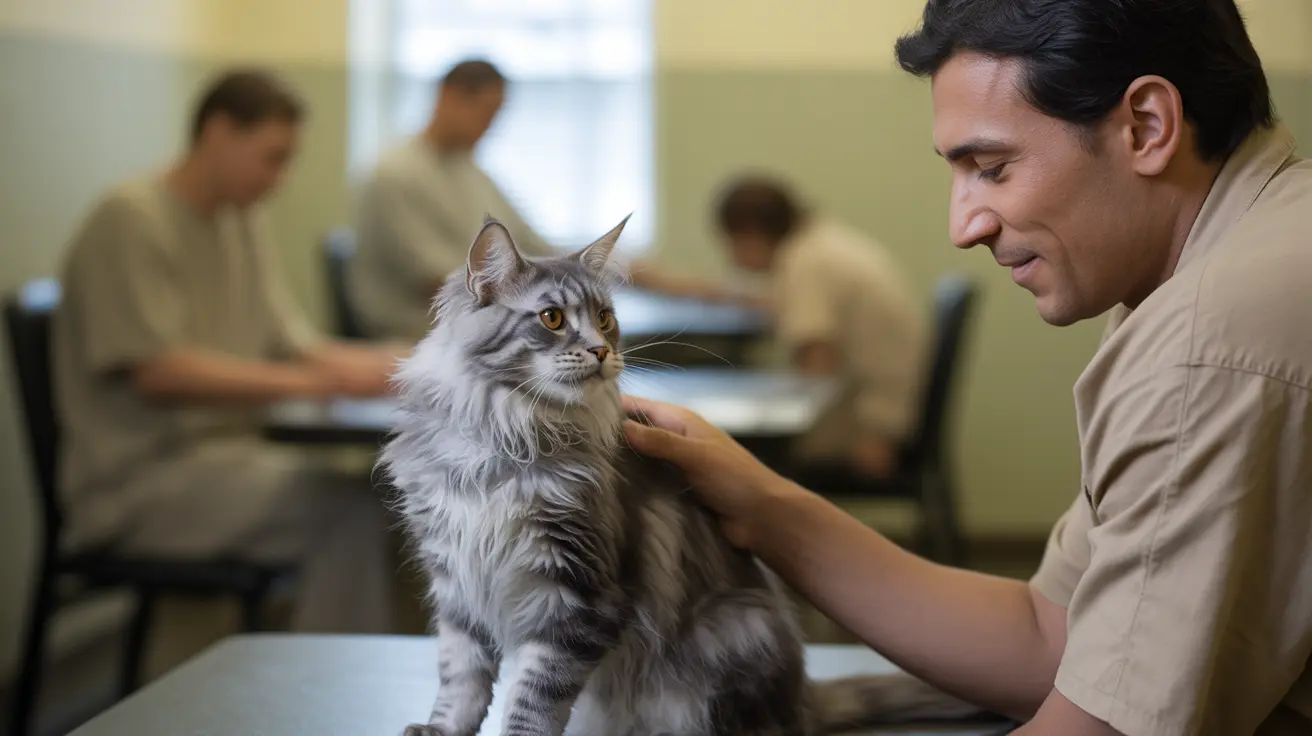How Prison Cat Programs Operate
Prison cat programs typically partner with local animal shelters to bring cats and kittens into correctional facilities. Carefully screened inmates become responsible for the daily care, socialization, and sometimes even medical treatment of their feline charges. These programs operate under strict supervision from both prison staff and animal welfare organization volunteers.
Most programs focus on cats who need special attention before becoming adoptable, including shy kittens, senior cats, or those requiring medical care. Inmates maintain detailed records of their cats' progress, creating thorough documentation that helps future adopters understand their new pets' personalities and needs.
Impact on Inmate Rehabilitation
The presence of cats in prison facilities has shown remarkable benefits for inmate rehabilitation. According to comprehensive studies, these programs consistently demonstrate:
- Reduced stress and anxiety levels among participants
- Improved emotional regulation and self-control
- Enhanced sense of responsibility and purpose
- Development of empathy and compassion
- Better behavioral outcomes within the facility
The structured routine of cat care provides inmates with valuable life skills and a sense of purpose that can help reduce recidivism rates after release. Many participants report that the unconditional love and trust they experience with their feline companions helps them reconnect with their own humanity.
Benefits for Shelter Cats
The advantages for participating cats are equally significant. These programs provide:
- Individual attention and socialization
- Regular veterinary care and monitoring
- Safe, controlled environments for rehabilitation
- Increased chances of adoption
- Documentation of personality and behavior traits
Cats who might otherwise face euthanasia or long-term shelter stays receive focused care that makes them more adoptable. The one-on-one attention from inmates helps even shy or traumatized cats learn to trust humans again.
Success Stories and Program Outcomes
Prison cat programs across the country have demonstrated impressive results. The Jail Cats program alone contributed to the successful adoption of hundreds of cats, while similar initiatives have reported equally positive outcomes. These programs often maintain nearly 100% adoption rates for participating cats, while also showing improved behavioral metrics among participating inmates.
Frequently Asked Questions
How do prison cat programs like Jail Cats benefit both inmates and shelter cats?
Prison cat programs provide inmates with therapeutic interactions, responsibility training, and emotional support while giving shelter cats individual attention, socialization, and medical care they need to become adoptable pets.
What kinds of care and socialization do inmates provide to cats in correctional facility programs?
Inmates provide daily feeding, grooming, and playtime, maintain living spaces, monitor health, and document behavioral progress. Some programs also include basic training and medical care under supervision.
Can participating in cat care programs help reduce inmate stress and improve rehabilitation outcomes?
Yes, studies show that inmates involved in cat care programs experience reduced stress, improved emotional regulation, and better behavioral outcomes. These programs often contribute to lower recidivism rates.
How do prison programs ensure the safety and well-being of cats while inside correctional facilities?
Programs maintain strict oversight through prison staff and animal welfare organization volunteers. Inmates undergo careful screening, and cats are housed in dedicated, secure areas with regular veterinary monitoring.
Are cats socialized in prisons more likely to be adopted after their time with inmate fosterers?
Yes, cats in prison programs typically show improved socialization and adoptability due to the consistent, one-on-one attention they receive. Many programs report nearly 100% adoption rates for participating cats.
Prison cat programs demonstrate that rehabilitation and second chances can work both ways, transforming lives on both sides of the bars. These initiatives continue to expand across correctional facilities, proving that sometimes the best path to healing comes with four paws and a purr.






